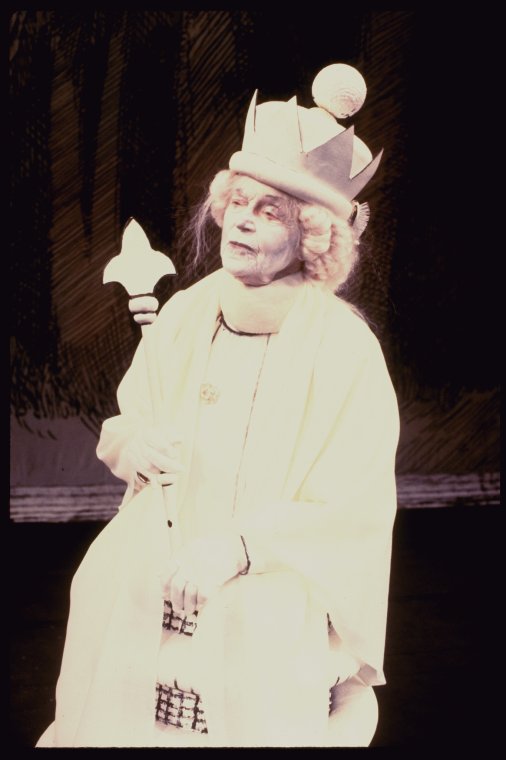Archives
Alice Live! on Television

In the mid-1950s, the networks and independent channels campaigned to establish television watching as a family activity. One of their methods was to develop dramatizations of well-known children’s stories. The best remembered examples include the annual broadcasts of the M-G-M Wizard of Oz and the musical Peter Pan. Please see my blogs in BroadwayWorld (http://www.broadwayworld.com/article/NY-Public-Librarys-Rosenberg-Curator-of-Exhibitions-Barbara-Cohen-Stratyner-Ph-D-on-Finding-THE-WIZ-20151123) for additional information on the contemporary NBC live broadcasts.
In the 1954 and 1955 seasons, two lavish productions of Alice in Wonderland were premiered on television. In each case, they were developed to attract families to the presenting series and their sponsors. Like almost all television then, they were live and therefore eligible to be featured in our current exhibition Alice Live! (in the Oenslager Gallery through January 16, 2016).
Our guest curator/scholar Charlie Lovett discovered the 1954 production, which featured Edgar Bergen and his ventriloquist character Charlie McCarthy. The sponsor, Kraft Foods, used it to promote Bergen’s transition from radio to television and the exhibited script specifies that a Cheese Whiz commercial preceded the 2nd Act. Robin Morgan played the title character. It was written by Phyllis Merrill, one of the premiere women in advertising and television. Working for J. Walter Thompson, she can be seen as a model for Mad Men’s Peggy and Joan. Her advertising and television papers are fascinating reading. Phyllis Merrill Papers, Billy Rose Theatre Division.
In 1955, Hallmark Hall of Fame broadcast its own Alice in Wonderland, adapted by Florida Freibus from the Frebus/Le Gallienne dramatization, which combines elements from both Alice plots. It was narrated and directed by Maurice Evans. The script, rehearsal schedule and production notes are included in the Maurice Evans Papers. Serendipity alert: We discovered them while investigating his mid-1950s productions of The Magic Flute and The Tempest for next Spring’s exhibitions. As in most television from the early decades, the commercials were written in to the scripts, so we know that Hallmark was promoting packages of favors for children’s parties. Charlie Lovett actually had some examples of Hallmark’s paper Alice masks. Once we verified the existence and schedule for the broadcast, the BRTD staff and volunteers helped to identify a set of NBC contact sheets with Tennial inspired costumes, which documents the rehearsals and mid-1950s special effects. Under a magnifier, we could even see Eva LeGallienne costumed as the White Queen hooked into a rig that allowed her to fly onto the set. Run-down and script page, Maurice Evans Papers, Billy Rose Theatre Division.
Read E-Books with SimplyE
 With your library card, it's easier than ever to choose from more than 300,000 e-books on SimplyE, The New York Public Library's free e-reader app. Gain access to digital resources for all ages, including e-books, audiobooks, databases, and more.
With your library card, it's easier than ever to choose from more than 300,000 e-books on SimplyE, The New York Public Library's free e-reader app. Gain access to digital resources for all ages, including e-books, audiobooks, databases, and more.
If you don’t have an NYPL library card, New York State residents can apply for a digital card online or through SimplyE (available on the App Store or Google Play).
Need more help? Read our guide to using SimplyE.